While planning your hike, look at the topo map and check out the creeks and rivers crossing.
Stream crossing can be dangerous.
by Leon Pantenburg
Yellowstone National Park, Thorofare Trail, 1978: Seeing a grizzly (from a very safe distance) was on my bucket list. I was hiking the Thorofare Creek trail in southeast Yellowstone.
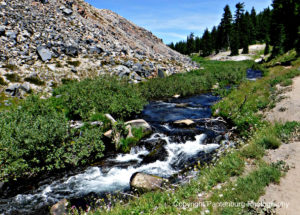
Beautiful, fast-flowing creeks are a wonderful part of the mountain hiking experience. Until you have to cross them.
On one of the innumerable crossings of the creek, I put on my running shoes and waded across. There was a set of bear tracks in the sand, and a print measured as wide as my outstretched hand. The track was so fresh the water hadn’t even started to fill it yet.
Stumbling upon and surprising a grizzly wasn’t a great idea. Singing loudly and making a lot of noise was. Nobody ever belted out “Amazing Grace” with more fervor, volume, commitment and conviction than I did walking on that creek trail! (from Bushcraft Basics, by me.)
Crossing creeks is part of backpacking. Venture very far off the beaten path, and the bridges are few and far between. But you still need to get to the other side. There are different ways to get through the water, and it will probably depend on your hiking style and philosophy.
The hard-charging, through-hiker crowd tends to cross rivers “ultralight style. ” – meaning you walk through the water wearing your hiking shoes and keep walking once you get to the other side.
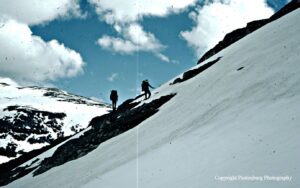
Bighorn Mountains, Wyoming, 1976: A freak storm dumped a couple feet of snow on us in late June. My feet were cold anyway; if my boots and socks had been wet…. a survival situation.
There’s no stopping to change shoes and socks. Their boots/shoes will theoretically dry out while walking, and there is no lost time.
Some people might decide to take off their boots and go across barefoot. This is a really bad idea, even if the bottom is sandy, the water is clear, and you think you can see everything. There still might be a broken beer bottle just under the surface.
Then there is my personal old guy, seasoned-citizen philosophy, where smelling the roses and enjoying the journey is paramount. On long trips, a pair of lightweight running or water shoes are taken along. At streams, the water shoes are donned fore wading across.
These shoes are also backups if your boots break down. This happened on the aforementioned Yellowstone hike. Later in the journey, the sole separated from one of my leather boots, and I ended up hiking out a day to the Old Faithful Inn in my Adidas running shoes.
The ultralight style technique tends to trip up some hikers. (I have no willpower when it comes to puns!) The first consideration is the idea of cold, wet feet.
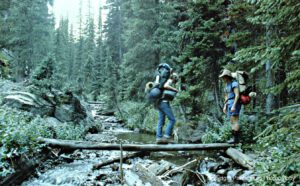
Some popular crossings may have makeshift log bridges.
Us old guys are in this camp. If you are in the mountains, plummeting temperatures and freak rain or snow storms can happen. Your cold, wet feet may become cold, wet frozen feet.
The second concern is fear of blisters caused by hiking in soggy socks and shoes.
This may not be a big deal in warm weather. Really, having damp shoes that will dry out probably don’t have real impact on most hiker’s performance.
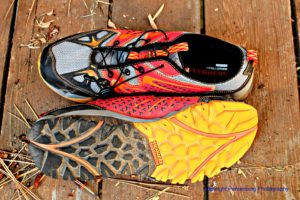
These Merrell Capras are my favorite water shoes. They dry out quickly and are excellent for hiking with a light pack.
The added footwear moisture that you think might cause blisters may actually be offset by the cold water. Blisters are formed by heat, friction, and moisture. Heat and friction are generally more problematic than moisture. Learn how to prevent blisters.
The best footwear for hiking in wet areas where there are lots of ultra light stream crossings has the following characteristics:
- Lightweight – so they absorb less water.
- Flexible – so when you start walking on the other side of the stream, each step “plunges” water out of the shoe.
- Breathable mesh uppers – so water drains out of them readily.
Here are five safety tips for any stream crossing.
Uncouple your pack’s waist belt, and only have one arm in a pack strap. That way, if you slip and fall, you can get away from your fully-loaded backpack.
Look for the best crossing spot. The safest area to cross might require going up or down from the established crossing. This sometimes happens at horse crossings – the horses or mules can handle slippery rocks and deeper water much better than humans.
Check the creek bottom as much as possible before wading. Look for slippery logs, hidden rocks, holes and deep spots and other obstacles. Chart a course.
Look for places where the water is relatively calm. Fast-moving, knee-high water can be treacherous. Much deeper, and it might sweep you off your feet if you stumble or slide on a rock.
Use a walking stick or trekking poles for balance: A stick or staff turns a shaky human bipod into a stable tripod. Should you fall down in the stream, the staff can help you regain your feet.
Stream crossings are part of the whole backpacking experience. Embrace the opportunity you’ll get a chance to cool and wash your feet and experience some podiatrist refreshment!

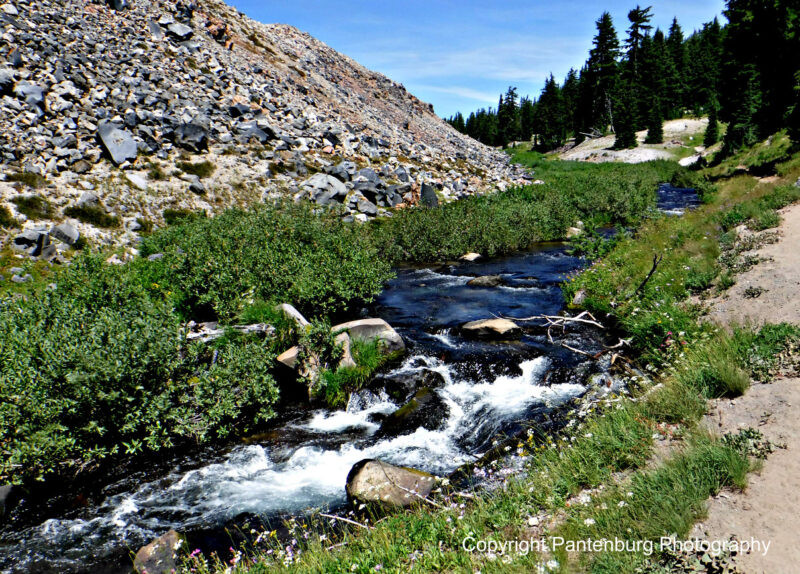

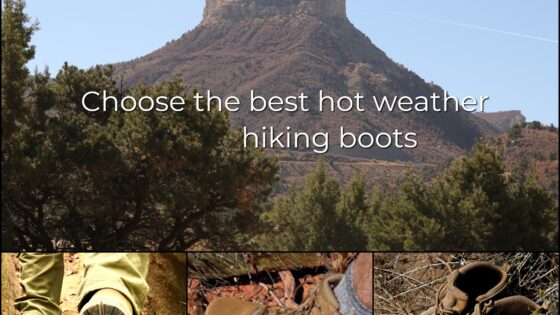
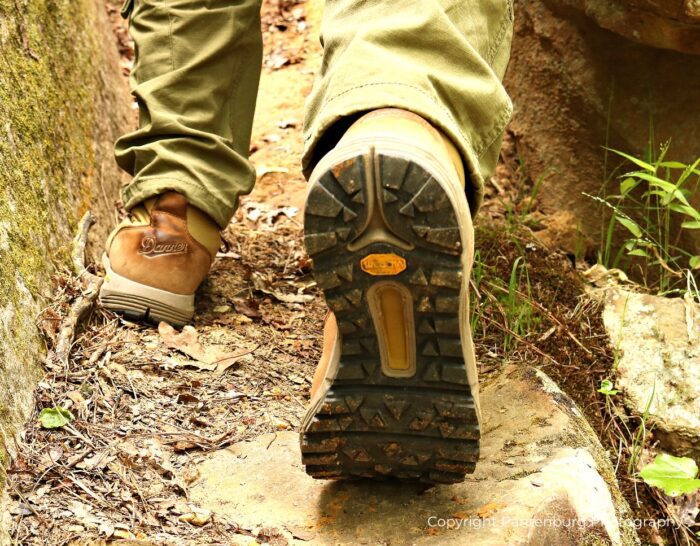
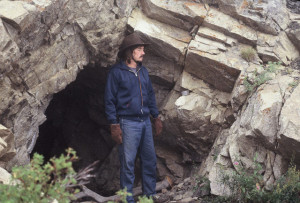
Leave a Reply